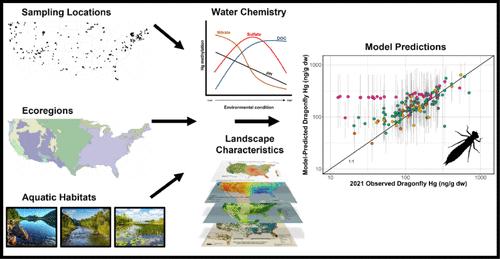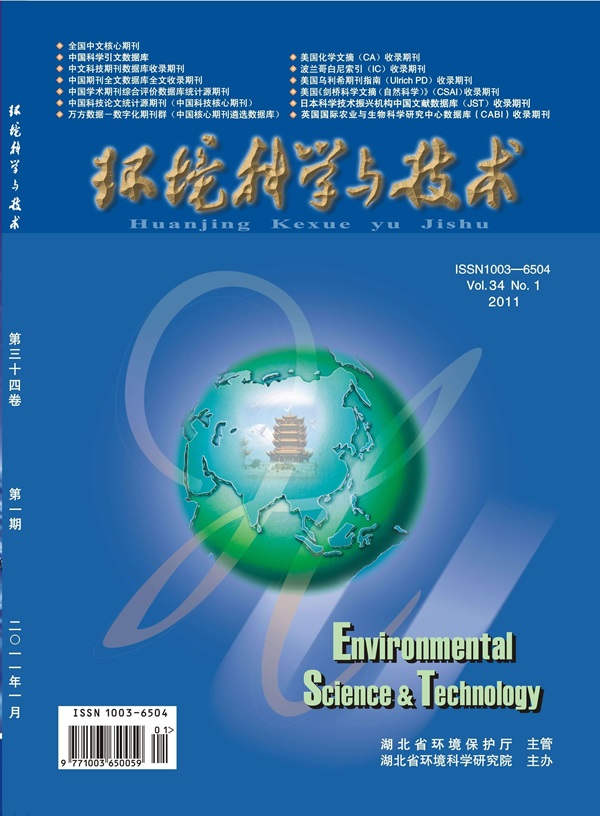Ecosystem Drivers of Freshwater Mercury Bioaccumulation Are Context-Dependent: Insights from Continental-Scale Modeling
IF 10.8
1区 环境科学与生态学
Q1 ENGINEERING, ENVIRONMENTAL
引用次数: 0
Abstract
Significant variation in mercury (Hg) bioaccumulation is observed across the diversity of freshwater ecosystems in North America. While there is support for the major drivers of Hg bioaccumulation, the relative influence of different external factors can vary widely among waterbodies, which makes predicting Hg risk across large spatial scales particularly challenging. We modeled Hg bioaccumulation by coupling Hg concentrations in more than 21,000 dragonflies collected across the United States from 2008 to 2021 with a suite of chemical (e.g., dissolved organic carbon (DOC), pH, sulfate) and landscape (e.g., soil characteristics, land cover) variables representing external drivers of Hg methylation, transport, and uptake. Model predictions explained 85% of the variation in dragonfly Hg concentrations across the United States. Certain predictor variables were more important than others (e.g., DOC, pH, and percent wetland), and they varied among waterbodies. Variation in Hg bioaccumulation was explained by including habitat and ecosystem type in a hierarchical modeling framework, which confirms the context-dependency of external factors in explaining Hg bioaccumulation across disparate freshwater ecosystems. This continent-scale model provides valuable insights into the processes underlying landscape-scale patterns in Hg exposure risk and demonstrates that drivers of Hg methylation and bioaccumulation are habitat- and ecosystem-dependent.

求助全文
约1分钟内获得全文
求助全文
来源期刊

环境科学与技术
环境科学-工程:环境
CiteScore
17.50
自引率
9.60%
发文量
12359
审稿时长
2.8 months
期刊介绍:
Environmental Science & Technology (ES&T) is a co-sponsored academic and technical magazine by the Hubei Provincial Environmental Protection Bureau and the Hubei Provincial Academy of Environmental Sciences.
Environmental Science & Technology (ES&T) holds the status of Chinese core journals, scientific papers source journals of China, Chinese Science Citation Database source journals, and Chinese Academic Journal Comprehensive Evaluation Database source journals. This publication focuses on the academic field of environmental protection, featuring articles related to environmental protection and technical advancements.
 求助内容:
求助内容: 应助结果提醒方式:
应助结果提醒方式:


